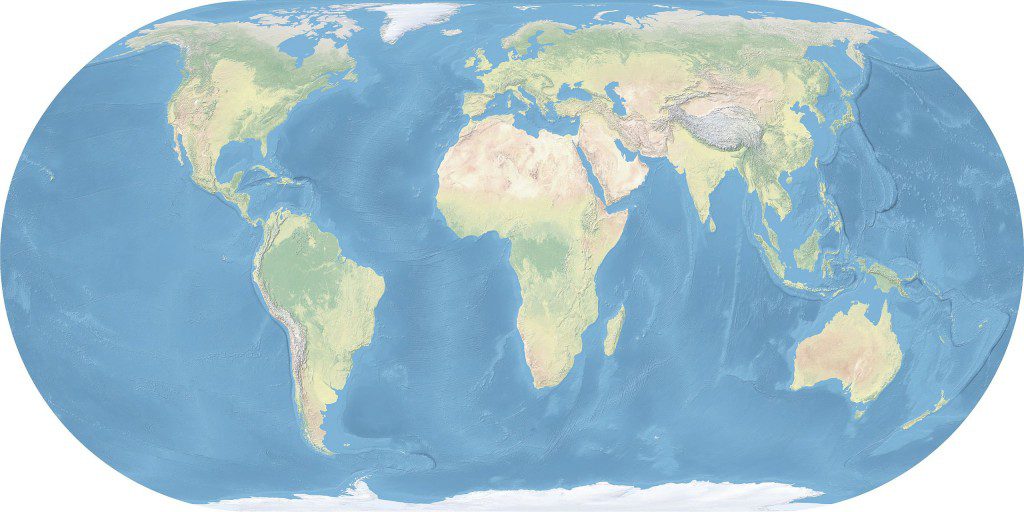
(Wikimedia Commons public domain)
Something of an apology (in the classical sense) for the book on Islam that I’m preparing for a Latter-day Saint audience, from Chapter 1:
I have a little book in my home library that I treasure. I love it for its impressive title: The History of the World in Two Hundred and Forty Pages.[1] In many ways, although I’m about to use it as a bad example, it isn’t really a bad book. But I confess that I actually bought it for its table of contents, which is highly instructive. Here’s a list of the book’s chapter headings:
- Prehistoric Man
- The Ancient World
- The Age of Greece
- The Thousand Years of Rome
- The Thousand Years of Christendom
- The Awakening of the West
- The Age of Italy
- The Age of Spain
- The Centuries of France
- The Anglo-Saxon Centuries
These chapter headings tell us something important about a certain view of the world. In The History of the World in Two Hundred and Forty Pages, the first twenty-two pages are actually taken up by the title page, the table of contents, and a chapter on prehistory. Thus, a more accurate— and even more impressive—title might have been “The History of the World in Two Hundred and Eighteen Pages.” History proper begins only with the second chapter, which discusses the great civilizations that grew up around the Nile, Tigris, Euphrates, Indus, and Yellow Rivers. With its discussion of Egypt, Mesopotamia, India, and China, this chapter really does look like an attempt at world history. But there is little effort at world coverage after Chapter Two. It seems, in fact, that the great river-based civilizations of the ancient world existed only to give rise to Greece, the subject of the third chapter. There are nods toward India and China, but as far as this book is concerned their central role in world history is essentially past. Greece, in its turn, sparks the rise of Rome and then vanishes from the stage. Rome is important for its role in the rise of Christianity, which receives a chapter. Eventually, Italy reappears as the cradle of the Renaissance, but it’s soon replaced on center stage by Spain and its conquest of the New World. The chapter on Spain is followed by a chapter on “The Centuries of France” and then by a concluding chapter on “The Anglo-Saxon Centuries.”
The most noticeable thing about this list of chapter headings is that eight of the nine historical chapters in History of the World deal primarily with the history of Europe. And seven of those eight chapters, in turn, are focused primarily or even entirely on the history of western Europe. But Europe is only a peninsula on the western end of the Eurasian landmass. A pygmy among continents, it doesn’t even have a clear geographical boundary that defines it in the way North and South America can be distinguished from one another, or, to choose an even clearer example, in the way that Australia and Africa are unmistakably distinct. From a certain perspective, it’s a continent by courtesy. Certainly it seems strange that so small an area should so dominate a book on “world history.” Certainly, too, it’s noteworthy that all of world history culminates in France and England. It reminds me a bit of a comment I heard many years ago, to the effect that the nineteenth century liked Darwin’s theory of evolution so very much because it seemed to say that all of the history of the globe, all the struggles of the reptiles and the dinosaurs, the gropings of the cavemen and the slow progress of civilization through the centuries of history, had culminated in . . . the enlightened thinkers of the nineteenth century, the crown of creation.
Yet this small book, while extreme, isn’t really very unusual. My own high school studies in history—and probably yours as well—were similarly focused. We nodded in the direction of India and China and Mesoamerica; we drowsed through five or six pages on the medieval Near East; but we spent the bulk of our time on Europe. And not on all of Europe. How many high school students ever learn much about Poland or the fascinating history of Hungary or the Balkans? What do we ever learn about the Byzantine Empire? We limit our attention to a few nations in the western part of the European peninsula. We study England, France, Spain, and Italy— countries with cultures and religions very close to our own—and we call it world history. This is, frankly, scandalous.
[1] Rene Sédillot, The History of the World in Two Hundred and Forty Pages, translated from the French by Gerard Hopkins (New York: The New American Library, 1951).










